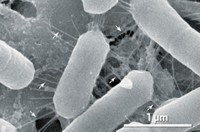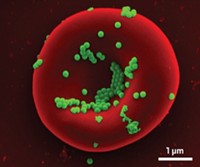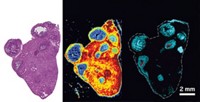Advertisement
Grab your lab coat. Let's get started
Welcome!
Welcome!
Create an account below to get 6 C&EN articles per month, receive newsletters and more - all free.
It seems this is your first time logging in online. Please enter the following information to continue.
As an ACS member you automatically get access to this site. All we need is few more details to create your reading experience.
Not you? Sign in with a different account.
Not you? Sign in with a different account.
ERROR 1
ERROR 1
ERROR 2
ERROR 2
ERROR 2
ERROR 2
ERROR 2
Password and Confirm password must match.
If you have an ACS member number, please enter it here so we can link this account to your membership. (optional)
ERROR 2
ACS values your privacy. By submitting your information, you are gaining access to C&EN and subscribing to our weekly newsletter. We use the information you provide to make your reading experience better, and we will never sell your data to third party members.
Biological Chemistry
Nanoparticles Keep Immune Cells From Doing Their Job
Macrophages fail to ingest pathogenic bacteria after exposure to iron oxide nanoparticles
by Journal News and Community
July 29, 2013
| A version of this story appeared in
Volume 91, Issue 30
In studying the potential health effects of nanoparticle exposure, scientists rely on cell death as a key indicator. But new research suggests that nanoparticles might require additional safety testing. Brian D. Thrall of Pacific Northwest National Laboratory and his colleagues treated immune cells with iron oxide nanoparticles and showed that although the cells appeared healthy in standard toxicology tests, they struggled to perform one of their key jobs: engulfing pathogenic bacteria (ACS Nano 2013, DOI: 10.1021/nn402145t). The researchers exposed macrophages from mouse bone marrow to superparamagnetic iron oxide nanoparticles. They then added a lipopolysaccharide to the culture, which the macrophages treat as bacteria, and measured the cells’ gene expression with a microarray chip device. The nanoparticles altered the expression of 1,044 genes by at least 50%. The most troubling changes, Thrall says, took place in oxidative stress and inflammation pathways, which play significant roles in macrophages’ ability to detect and clear bacteria. Indeed, when the researchers mixed the macrophages with Streptococcus pneumoniae, macrophages exposed to nanoparticles struggled to take up the pathogen, ingesting just half as much as unexposed cells.





Join the conversation
Contact the reporter
Submit a Letter to the Editor for publication
Engage with us on Twitter